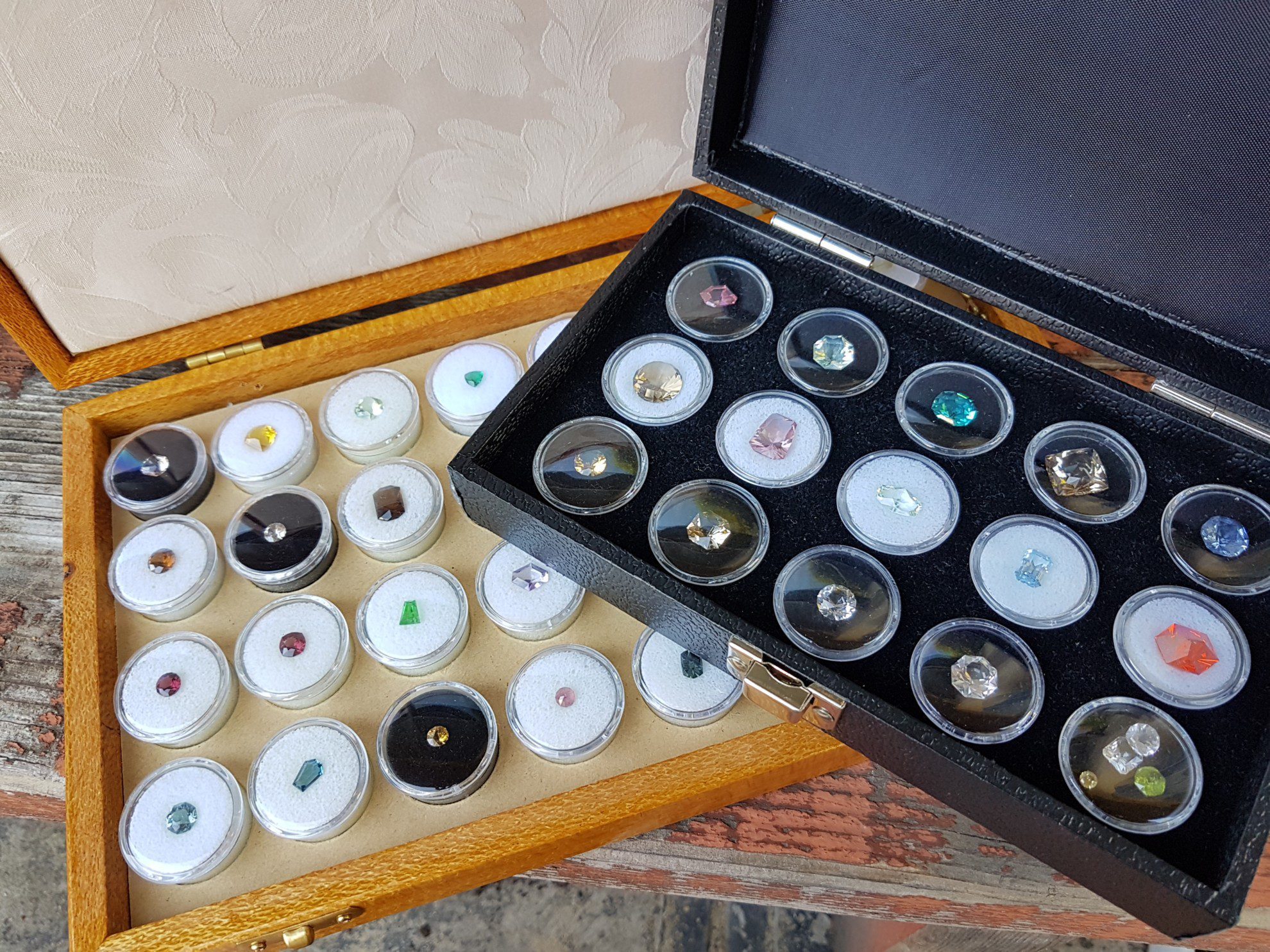How to Start a Gem Collection
Although many gem enthusiasts want to become collectors, they may not know where to begin. Read this article for tips on how to start a gem collection.
3 Minute Read
Record Keeping
Knowing what you've collected is crucial to maintaining your collection. It seems simple, but many novice collectors put off keeping records. However, the longer you delay this crucial step, the more daunting it becomes as your collection grows.
Keeping track of your collection can help you decide on your next gem purchase as well as identify any pieces you'd like to sell or donate. When the time comes, detailed records will also help your heirs.
At a minimum, keep records of
- Gemstone species and variety
- Physical description (including color, cut, clarity, and carat weight)
- Any known treatments or enhancements
- Any laboratory reports
- Lapidary/gem designer
- Date of cutting
- Date acquired
- Bills of sale and other paperwork
- Dealer names and contact information
- Physical location
Even if your first gems are factory-cut or synthetic materials, keep records of them. Your future self will be grateful.
Remember, a picture is worth a thousand words. Photos of your gemstones will greatly enhance your records.
Storage and Care
An organized collection will make finding each piece easy. Some collectors choose to sort by gem species, while others may group their gems by color or origin. You have many options for storage and display, including gemstone jars and jewelry bags. For a small and growing collection, a plastic container with dividers may be the simplest to manage.
Always store gems separately (either individually or by species) to avoid scratches. Use padding for any gem that may fracture or chip easily. In addition, proper cleaning and care is essential to keeping your collection in top shape. Because oils and dirt may damage gems over time, always clean them before placing them in storage. Particularly sensitive gems, opals and pearls require gentle cleaning.
Adding to Your Collection
Of course, part of the fun of having a collection is growing it. Do your research and understand what you're buying before acquiring a new gem. Keep in mind that buying the best quality gem that you can afford will make you happiest down the road.
Collections with a Focus
Some collectors simply enjoy fine gemstones and jewelry, appreciating the qualities of each stone in their collection. Others become connoisseurs of a particular gem, focusing their collection on that stone's different varieties and origins. Still others may seek out rare and unusual species, gemstones with unique cuts, or fascinating phenomenal effects.
Giving your collection a focus will help you decide how to grow your collection and what to acquire.
How to Start a Gem Collection on a Budget
Many collectors start out low on funds. Although gems can be quite expensive, you can still grow your collection on a budget.
If your collection has a broad focus, you can start with any one of many inexpensive gem families. For example, you can often find quite affordable varieties of quartz, zircon, garnet, and topaz. Opaque gems, even high-quality material, are often inexpensive. These include turquoise, carnelian, agate, and onyx.
For certain gems, such as alexandrite, a cat's eye cabochon will be less expensive than a faceted stone. These always make for an interesting addition to your collection.
Origin often impacts price for many gems. For example, Colombian emeralds command a premium in today's market, while specimens from other sources are less expensive.
Buying a piece of rough to make a "rough and cut set" for each gem in your collection is another way to add interest without breaking the bank.
Synthetic and treated gemstones are often much less expensive than natural and untreated gems. These can be a great way to add more varieties and colors to your collection.
Education and Resources
Learning more about gems and gemology will help you grow your collection. Numerous books on gems can provide interesting and useful information on the pieces in your collection. They may even inspire your next acquisition.
Local gem clubs and online communities, like the IGS Forums, can provide answers to your more in-depth questions.
Addison Rice
A geologist, environmental engineer and Caltech graduate, Addison’s interest in the mesmerizing and beautiful results of earth’s geological processes began in her elementary school’s environmental club. When she isn’t writing about gems and minerals, Addison spends winters studying ancient climates in Iceland and summers hiking the Colorado Rockies.
Related Articles
How Does Quartz Form?
How Do Emeralds Form?
What is Gemstone Luster?
An Introduction to Gemstone Inclusions
Latest Articles
800 Years of Mogok: A Celebration in Tenuous Times
What is the Average Gemstone Faceting Yield?
Pyroxmangite Value, Price, and Jewelry Information
How to Identify Emerald Simulants and Synthetics
Never Stop Learning
When you join the IGS community, you get trusted diamond & gemstone information when you need it.
Get Gemology Insights
Get started with the International Gem Society’s free guide to gemstone identification. Join our weekly newsletter & get a free copy of the Gem ID Checklist!
